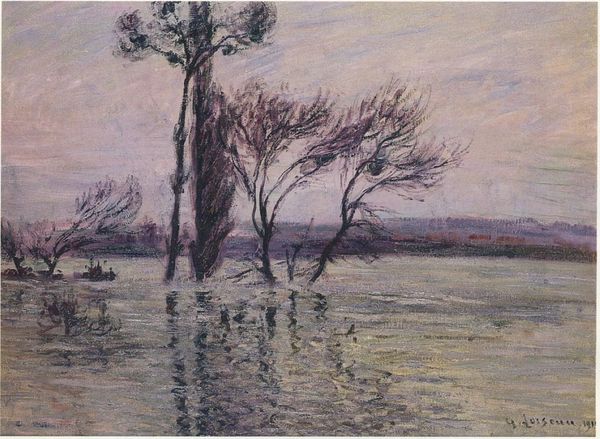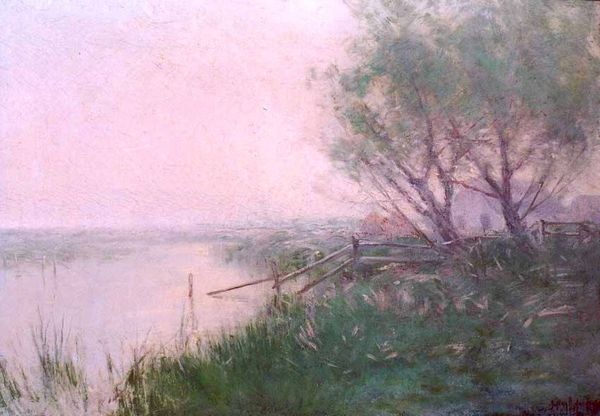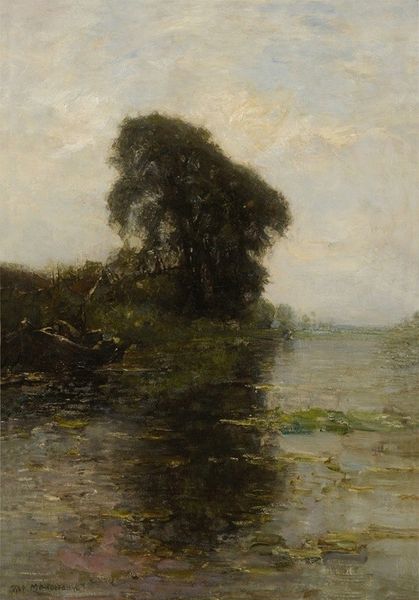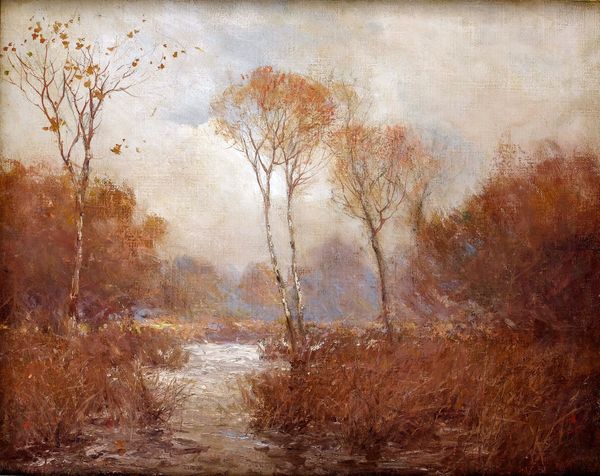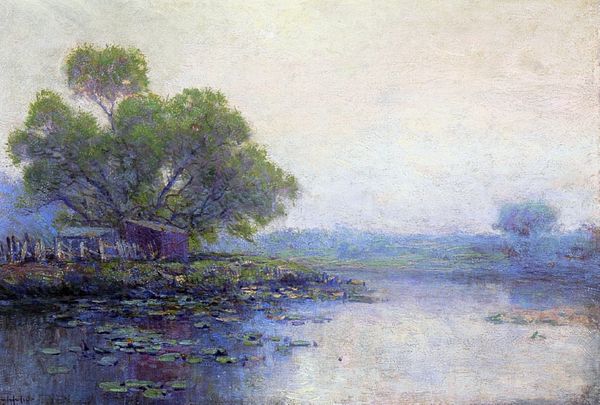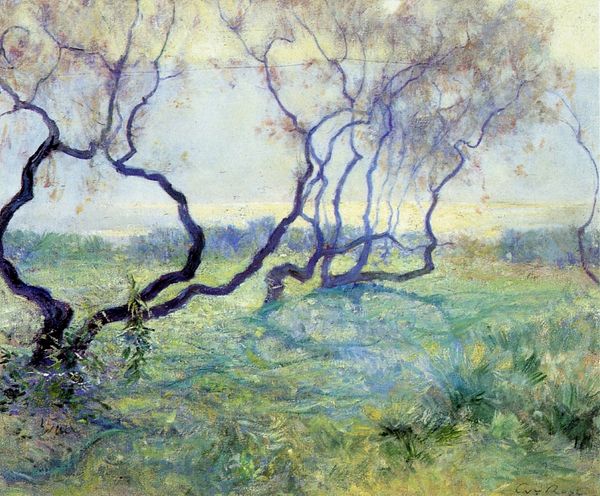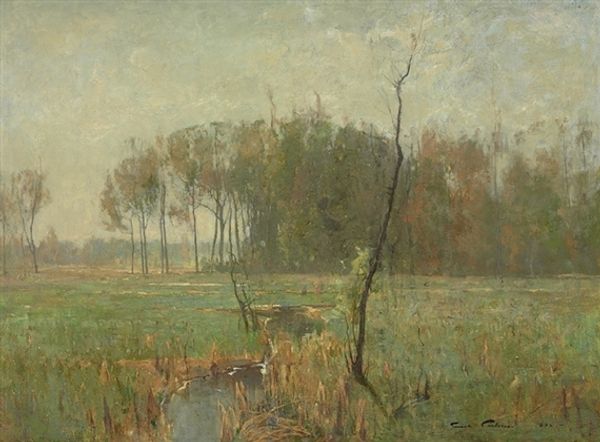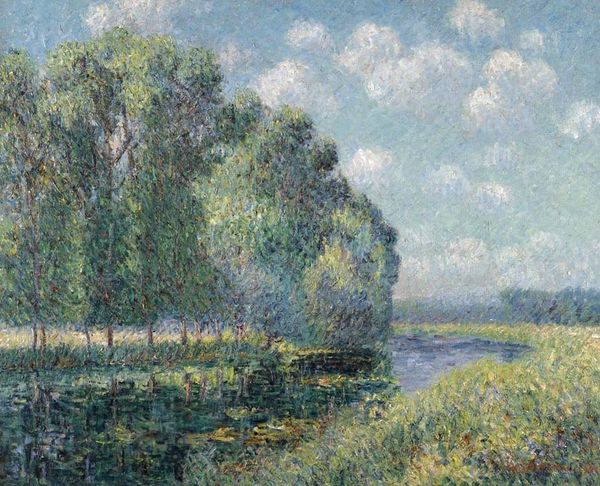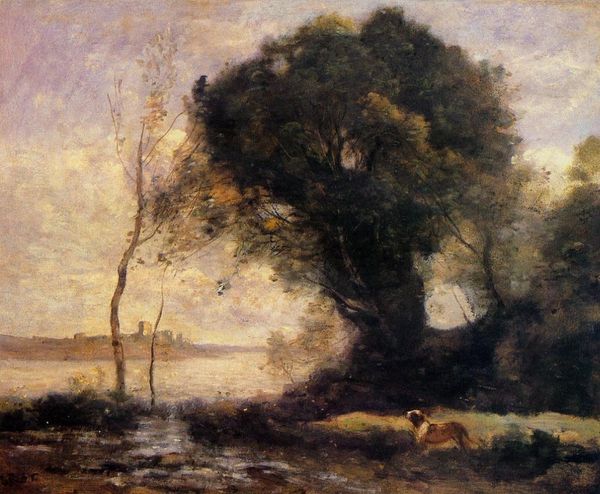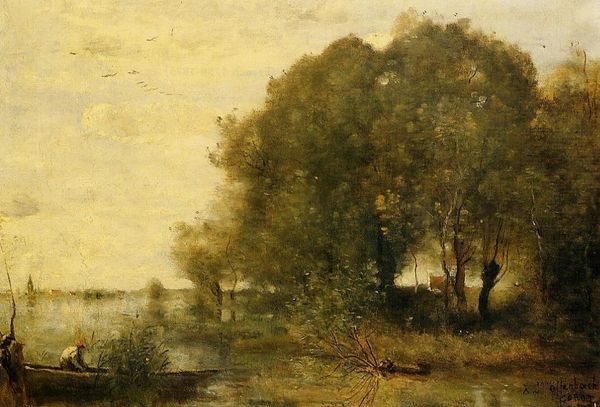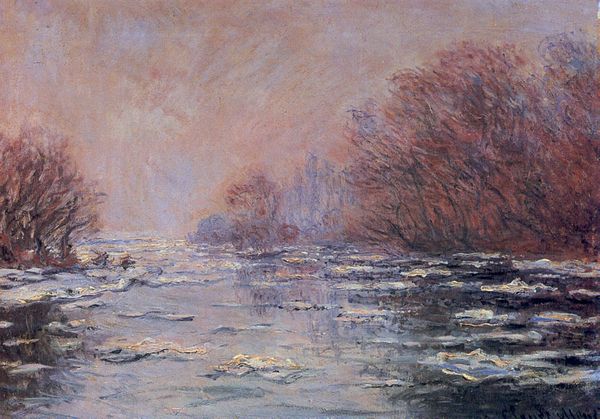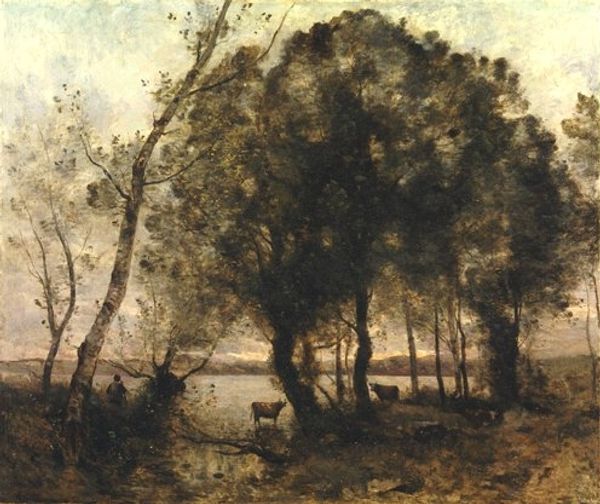
plein-air, oil-paint, watercolor
#
impressionism
#
plein-air
#
oil-paint
#
landscape
#
watercolor
Copyright: Public domain
Editor: Here we have Laszlo Mednyanszky's landscape painting, possibly titled "Melting," rendered in oil and watercolor, characteristic of plein-air impressionism. The subdued color palette really evokes a serene, almost melancholic mood. What layers of meaning do you find within this atmospheric piece? Curator: The image absolutely evokes the aesthetic shift at the turn of the century, mirroring broader societal and cultural anxieties. The "melting" visual gives an ephemerality connected to ideas of modernity: loss of tradition, nature consumed by industry. Mednyánszky was painting during massive socio-political changes in Europe. What if we see it as symbolic of an older order fading into something new, a "melting" away of the Austro-Hungarian Empire? Editor: That's interesting. The social and political context really colors how I see the artwork. Are you suggesting this is an intentional statement about empire? Curator: Intentionality is tricky, but let’s consider Mednyánszky's social position, class anxieties and artistic connections with his social environment. Even an ostensibly apolitical landscape is still produced, displayed, and consumed within specific power structures. This work moves the representation of "nature" away from romantic nationalism towards something more fragile, personal and ambivalent. Does seeing the painting this way change how you view its "serene" mood? Editor: Definitely. The fragility of the trees reflected in the water suddenly feels less peaceful and more like a warning. It is such a nuanced work and it also highlights how even landscapes are shaped by political landscapes. Thank you. Curator: My pleasure. Understanding those complex layers really opens up new dialogues about art.
Comments
No comments
Be the first to comment and join the conversation on the ultimate creative platform.
